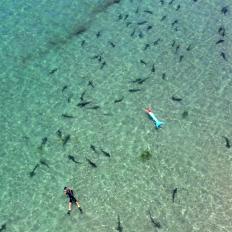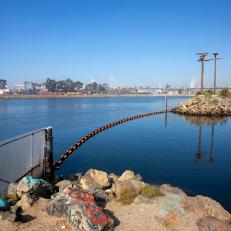Can the Los Angeles River be Restored?
Conservationists hope a restored Los Angeles River could provide a safe path for migrating steelhead trout.
Learn all about their efforts and the state of the LA river on the newest episode of Nature in Focus.
June 06, 2022
Show:
Nature in Focus
Shop This Look
The LA River where it meets the Pacific Ocean in Long Beach, California. This is the entry point for migrating steelhead salmon that would hope to return to their spawning grounds in the mountains above Los Angeles. This marks the start of a nearly 40 mile journey upstream, though barriers above prevent a successful migration.










